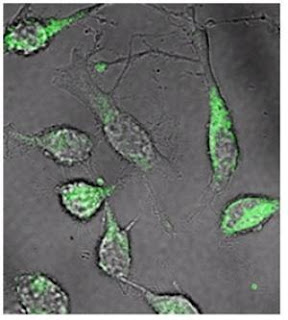Testosterone makes us overvalue our own opinions at the expense of cooperation, research from the Wellcome Trust Centre for Neuroimaging at UCL (University College London) has found. The findings may have implications for how group decisions are affected by dominant individuals.
Problem solving in groups can provide benefits over individual decisions as we are able to share our information and expertise. However, there is a tension between cooperation and self-orientated behaviour: although groups might benefit from a collective intelligence, collaborating too closely can lead to an uncritical groupthink, ending in decisions that are bad for all.
Attempts to understand the biological mechanisms behind group decision making have tended to focus on the factors that promote cooperation, and research has shown that people given a boost of the hormone oxytocin tend to be cooperative. Now, in a study recently published in the journal Proceedings of the Royal Society B, researchers have shown that the hormone testosterone has the opposite effect -- it makes people act less cooperatively and more egocentrically.
Dr Nick Wright and colleagues at the Wellcome Trust Centre for Neuroimaging at UCL carried out a series of tests using 17 pairs of female volunteers* who had previously never met. The test took place over two days, spaced a week apart. On one of the days, both volunteers in each pair were given a testosterone supplement; on the other day, they were given a placebo.
During the experiment, both women sat in the same room and viewed their own screen. Both individuals saw exactly the same thing. First, in each trial they were shown two images, one of which contained a high-contrast target -- and their job was to decide individually which image contained the target.
If their individual choices agreed, they received feedback and moved on to the next trial. However, if they disagreed, they were asked to collaborate and discuss with their partner to reach a joint decision. One of the pair then input this joint decision.
The researchers found that, as expected, cooperation enabled the group to perform much better than the individuals alone when individuals had received only the placebo. But, when given a testosterone supplement, the benefit of cooperation was markedly reduced. In fact, higher levels of testosterone were associated with individuals behaving egocentrically and deciding in favour of their own selection over their partner's.
"When we are making decisions in groups, we tread a fine line between cooperation and self-interest: too much cooperation and we may never get our way, but if we are too self-orientated, we are likely to ignore people who have real insight," explains Dr Wright.
"Our behaviour seems to be moderated by our hormones -- we already know that oxytocin can make us more cooperative, but if this were the only hormone acting on our decision-making in groups, this would make our decisions very skewed. We have shown that, in fact, testosterone also affects our decisions, by making us more egotistical.
"Most of the time, this allows us to seek the best solution to a problem, but sometimes, too much testosterone can help blind us to other people's views. This can be very significant when we are talking about a dominant individual trying to assert his or her opinion in, say, a jury."
Testosterone is implicated in a variety of social behaviours. For example, in chimpanzees, levels of testosterone rise ahead of a confrontation or a fight. In female prisoners, studies have found that higher levels of testosterone correlate with increased antisocial behaviour and higher aggression. Researchers believe that such findings reflect a more general role for testosterone in increasing the motivation to dominate others and increase egocentricity.
Commenting on the findings, Dr John Williams, Head of Neuroscience and Mental Health at the Trust, said: "Cooperating with others has obvious advantages for sharing skills and experience, but we know it doesn't always work, particularly if one alpha male or alpha female dominates the decision making. This result helps us understand at a hormonal level the factors that can disrupt our attempts to work together."
The Wellcome Trust funded this study.
*Testosterone is naturally secreted in men and women, and testosterone levels are correlated with important behaviours (e.g. antisocial behaviour) in both men and women. For the size of dose given experimentally, in women this markedly increases their testosterone from its low baseline level. In men, however, the situation is more complicated: men already have high baseline levels of testosterone, so giving such doses will decrease their own production of testosterone, a feedback effect that will act to offset the increase caused by the treatment itself. The researchers therefore used female subjects because giving standard experimental doses causes a straightforward and well-characterised increase in their testosterone levels.
Source: Wellcome Trust [January 31, 2012]


































